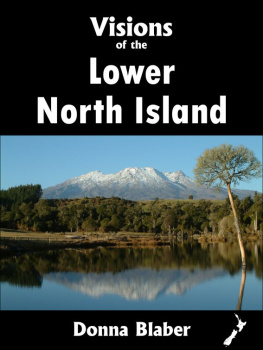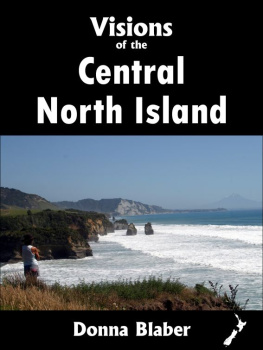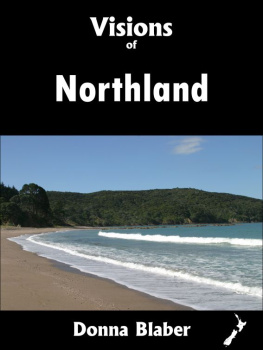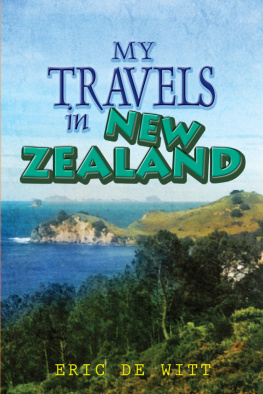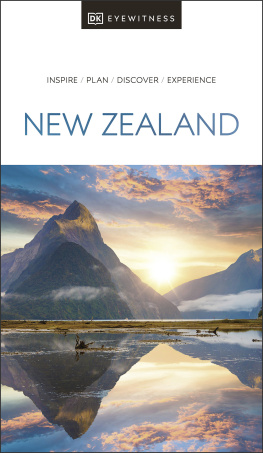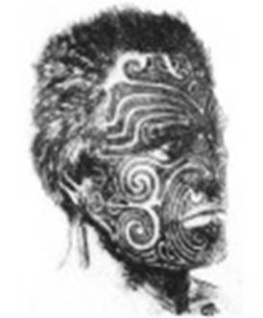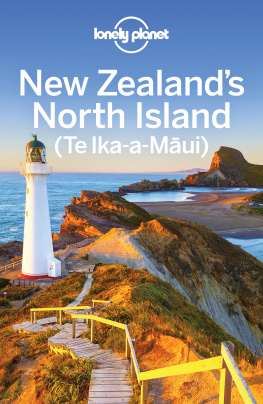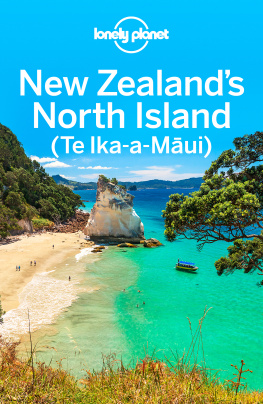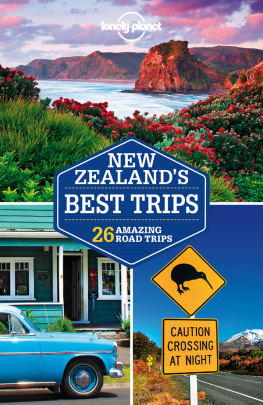Visions of New Zealand
The Lower North Island
By Donna Blaber
10 outstanding travel articles highlighting the LowerNorth Island's places, people, lifestyle and food
Copyright 2012:
Text & Photographs - Donna Blaber
Maps - Rupert Shaw
This book is sold subject to the condition that itshall not, by way of trade or otherwise, be lent, resold, hiredout, or otherwise circulated without the publishers prior consentin any form of binding, cover or format other than that in which itis published. No part of this publication may be reproduced, storedin a retrieval system, or transmitted in any form or by any means,electronic, mechanical, photocopying, recording or otherwise,without the prior consent of the copyright owners.
The moral rights of the author have been asserted.All rights reserved.
Published by Lighthouse Media Group atSmashwords.

Lighthouse Ltd, 350 Pataua North Road,
RD5, Whangarei, 0175, New Zealand
www.lmg.co.nz
Smashwords Edition, License Notes
This ebook is licensed for your personal enjoymentonly. This ebook may not be re-sold or given away to other people.If you would like to share this book with another person, pleasepurchase an additional copy for each recipient. If you're readingthis book and did not purchase it, or it was not purchased for youruse only, then please return to Smashwords.com and purchase yourown copy. Thank you for respecting the hard work of thisauthor.
Table of Contents
Introduction
The Lower North Island is the perfectdestination to take a road trip and this book provides you with acollection of 10 articles by award winning New Zealand journalist,Donna Blaber. As well as firmly grounding the reader in the LowerNorth Island by providing a real sense of place, she highlightssome of the best scenery, food and attractions to be found.
Join Donna and become inspired as sheexplores the beauty of the Lower North Island, meeting quirky localcharacters, and revealing all her favourite places to eat and rest,both on and off the beaten track.
The content of this book provides idealbackground reading for anyone planning to visit the Lower NorthIsland of New Zealand.
1. Tongariro Loop
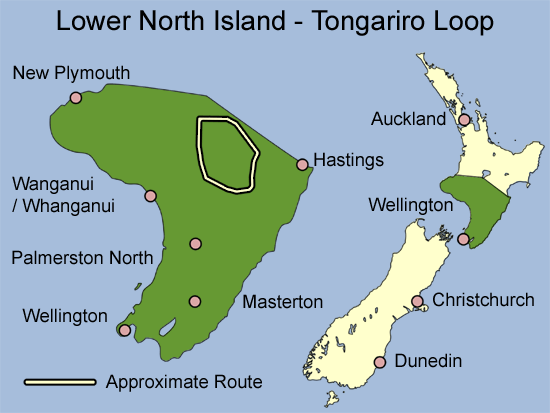
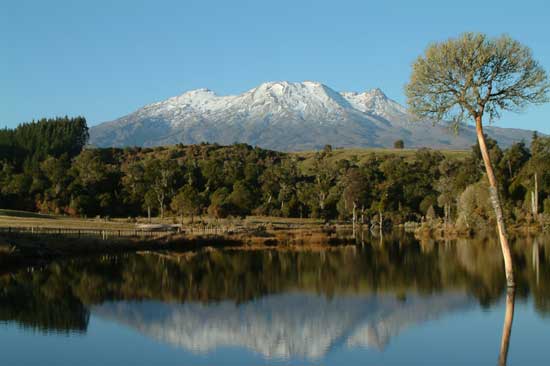
Lahar Lake, Mt Ruapehu
"Right, here we go," says our young pilot,Daniel McLachlan, as we bounce across a lumpy section of paddock.When we reach the sloping grass airstrip for the downhill take-off,it's mercifully smoother. The engines of the Cessna 206 give asudden mighty roar, and we hurtle down the runway. Within secondswe're airborne, and winging our way towards Mt Tongariro. It's anideal prelude to our scenic drive around the high, dry, centralplateau that is Tongariro National Park, as the Mountain Air scenicflight, available ex-Turangi or Whakapapa, provides a perfectpanoramic overview of the loop we'll be travelling.
Looming large beneath the wings of the planeare the diversely shaped peaks of Tongariro National Park: MtTongariro, with its red, raw craters; the charred cinder cone of MtNgauruhoe spluttering gas from blackened lungs; and Mt Ruapehu,majestic and powerful, the obvious ruler, with its snowy crown andsinister crater lake.
We fly first over the blood-red andchocolate-brown scoria of Mt Tongariro's crater walls, passing thesulphurous steam that spews forth from Ketetahi Springs. To thenorth lie Lake Rotoaira, the forest-smothered mass of Pihanga, andbeyond, the vast blue waters of Lake Taupo. A shimmer ofturquoise-blue attracts the eye back to the breached northern wallof Tongariro's crater where the vivid Emerald Lakes contrastsharply with the earthy volcanic shades. Nearby, Blue Lake or TeRangihiroa's Mirror, named after the son of a chief who exploredthe region in AD1750 also gleams brightly in the sun.
Ngauruhoe's classic cone then comes intoview, the black lava flows from its 1975 eruption snaking downsteep, 30-degree, scree-covered slopes. The youngest mountain inthe group, it's a hard one to climb: sliding on the loose scree five steps forward and three back makes for an arduousone-and-a-half hours. But the descent a fast, moon-walking glide,with scoria fragments burying your legs to the knees takes ascant 30 minutes.
Next we wing our way across to Mt Ruapehuover Tama Lakes, with Daniel providing an informative commentaryabout the geomorphology of the area and its relative youth. "Theoldest rocks here have been dated at 261,000 years old: planetEarth is dated at 5,000 million," he says.
A baby of sorts it may be, but at 2,797metres, Mt Ruapehu is the highest mountain in the North Island, andits acidic crater lake, precariously balanced on the summit, looksrather foreboding from the air. It's this lake that makes MtRuapehu the riskiest mountain of the three, as its irregulareruptions of tephra (ash and sandy particles) often block itsoutlet at the top of the Whangaehu River, creating an unstable dam.When the waters reach the top of the dam it creates a lahar of anunknown magnitude. But there's no need for panic as there's analarm system in place, which does not take Mother Nature lightly,and is based on a worst-case scenario event, the total collapse ofthe tephra dam.
After a slow loop over this perilous landformwe turn back, and once landed, drive to Tongariro Lodge in Turangi,which has a fine international reputation for its gourmet dining,trout fishing, and quality outdoor activities. After checking intoour fully self-contained, three-bedroom villa on the riverbank, wewander through the park-like surroundings to meet up with TimMcCarthy, head fishing guide for the lodge.
Whilst not a compulsory activity, you'd bemad not to try your hand at angling for the rainbow and brown troutthat thrive in these parts. Lodge guides, who are skilled atproviding a memorable fishing experience to all clientele,introduce novices to the intricacies of fly fishing; dedicatedanglers can stalk trophy browns and rainbows here with dry fliesduring the summer months, and pursue spawning runs of rainbow troutupstream with nymphs. Helicopter- and raft-fishing in remotehigh-country streams provide further opportunities to fish fortrophy trout.
"It's a year-round activity, and although thepeak time for overseas anglers is from Christmas to late March,I've noticed that we're getting just as good fishing in October andNovember," says Tim, as we head off upriver.
We cross the Red Hut Swingbridge and try ourluck in the Red Hut Pool, and then further along the river at CliffPool, before heading back to base. No fish are caught, but Timtells me the biggest he has snared on the Tongariro was a 12-poundrainbow, but that it's common to pull in six-pounders.
Next morning, after a night dreaming ofcatching a big 'un, we learn that the river's crystal-clear watersare shared by whitewater rafters and kayakers. One way to getamongst the whitewash of its grade-three rapids and seebreathtaking gorges is with Tongariro River Rafting. "The beauty ofthe Tongariro is that it's a busy little river," saysowner/operator Garth Oakden. "There are about 60 rapids over 13kilometres. They're not all big some are small but it's allvery consistent."
The company caters for family groups with aGentle Family Float, a leisurely afternoon cruise down thesoft-tumbling water of the lower Tongariro, which is ideal forfirst-timers and those travelling with kids. Whitewater kayakingand scenic floats are available as well.

